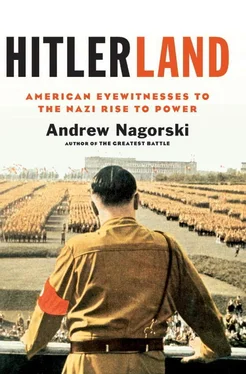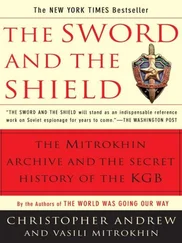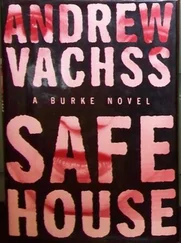In his postwar memoir, Wedemeyer openly stated what he had clearly implied. Deeply impressed by “German methods and quality of the instruction,” he concluded: “The German pedagogy and curriculum were, in my judgment, superior to our own.” By comparison, he felt that the instruction he had received at Fort Leavenworth was “much more theoretical” and the instructors mostly “mediocre.” In Berlin, his chief instructor was Major Ferdinand Jodl, the brother of Alfred Jodl, who would become a top commander in World War II and was convicted and hanged as a war criminal at Nuremberg. The lesser-known brother was “outstanding as a teacher,” Wedemeyer recalled, and overall he found the lectures at the German War College to be “thought-provoking” and comprehensive.
It was the practical training that left a particularly strong impression. “One of the map problems given while I was a student in Berlin involved a hypothetical attack against Czechoslovakia,” he wrote. “Later, it developed that the problem was not so hypothetical.” In his 1938 report, Wedemeyer included a broad array of details on everything from German weaponry to courier pigeons, but he didn’t spell out the obvious key conclusion. In his memoir, he made up for that omission. Pointing out that he could not have predicted the mistakes that would lead Hitler to disaster, he declared: “But assuredly I recognized that the Nazi leaders were preparing for war.”
During his studies in Berlin, Wedemeyer was careful not to discuss politics with his German counterparts. But he did write later that they sometimes “subtly revealed” their disapproval of their rulers. “There would be veiled statements, sometimes hints which would indicate shame, disgust, or displeasure with the Nazis.” He met General Ludwig Beck, who was ousted as the army’s chief of staff in 1938 and would later be executed for his role in the July 20, 1944, plot against Hitler. And among Wedemeyer’s classmates was Captain Claus von Stauffenberg, who carried the briefcase with the bomb that failed to kill the German leader; he was promptly executed as well. During his time at the German War College, Wedemeyer recalled, Stauffenberg recited poetry at parties and was “not always discreet in expressing his contempt for the Nazis or for Hitler.” But he was hugely popular, and he was never denounced for his views. Nonetheless, Wedemeyer felt that such anti-Nazi sentiment wasn’t all that widespread within the military in that period.
Wedemeyer also had the opportunity to observe Nazi bigwigs up close. Invited to a party where several of them were present, he wrote off Hess as “stolid, not overly intelligent,” but Goebbels was “a dynamo with a brain” and Goering “gave the impression of being jovial and an ebullient extrovert.”
As such descriptions imply, Wedemeyer genuinely enjoyed his two years in Berlin. He found both his classmates and instructors, whatever their views, to be “at all times friendly.” And soon he felt comfortable enough to engage in a bit of humor. When he first started arriving for classes, he didn’t know what to say when the cleaning women working on their hands and knees in the hallway would shoot out their right arms and greet him with “Heil Hitler.” Then, he started replying with “Heil Roosevelt.” By his second year, those exchanges had become legendary in the school, and the charwomen would greet him with the Nazi salute but say “Heil Roosevelt.” He then replied, “Heil Hitler.”
Later, when Wedemeyer was suspected of pro-German sympathies, he explained how easily such banter could be misinterpreted. But there was little doubt that, even after World War II, he felt far more sympathetic to Germany than most of his countrymen. “… however greatly one was revolted by Hitler’s treatment of the Jews and his arrogant bullying of small neighboring nations, one was compelled by knowledge of the record and the facts of Germany’s situation to understand the dynamic of self-preservation which underlay the Nazi revolution,” he wrote. Germans felt that Hitler had raised them from the abyss, he added. “It did not require any prolonged study of history to learn how false was the popular image of Germany as the most aggressive of nations and recurrent disturber of the peace.”
At the German War College, Wedemeyer pointed out that he was exposed to constant lectures about the Bolshevik menace. “Beneath the propaganda I discerned a great deal of truth about Communist aims, practices, methods unknown or ignored in America until recently,” he wrote. In other words, he came to believe that the Roosevelt Administration was wrong to consider Germany to be the main danger in Europe. “I was convinced that the German search for Lebensraum did not menace the Western World to anything like the same degree as the world-wide Communist conspiracy centered in Moscow.”
Like Lindbergh, Wedemeyer gained remarkable insights into the German military buildup but came away convinced that the United States should stay out of the looming conflict in Europe. According to Kay Smith, however, Wedemeyer and her husband also had a significant talk in 1938. “It was Al with whom Truman first discussed plans for an assault of Germany if needed,” she wrote in her unpublished memoir. “That discussion took place in our apartment.”
The two men regularly compared notes on their experiences, and Smith shared his knowledge about Germany’s rapid military buildup, which he was conveying in his regular reports to Washington. “I like to think that some of Truman Smith’s shrewdness and knowledge rubbed off on me during my German War College period,” Wedemeyer wrote. Once he returned to the United States, Wedemeyer had little patience for those who were curious about the political situation in Germany. “I had been disillusioned by the superficiality and nonmilitary type of questions put to me,” he observed. “I had been asked all sorts of questions about Hitler’s peculiarities, the Nazi persecution of Jews, and about Goebbels and Goering’s love life, but almost nothing pertaining to strategy, or German capabilities, military training, and organization.”
But there was one man who asked about exactly those subjects based on Wedemeyer’s lengthy report: General George Marshall, who was chief of war plans. “When I reported to him, he had a copy on his desk, and had made many notes, indicating that he had read the report carefully,” Wedemeyer recalled. Marshall asked, “What is the most important lesson you brought back from the German experience?” The young officer replied that the Germans would never fight a war again the way they did the last time. Instead of trench warfare, they would use new equipment and tactics based on “high mobility.” As Wedemeyer noted in a memorandum decades later, “I don’t want to sound like I am bragging, however I can assure you that these discussions, especially concerning our strategy and our tactics as the war advanced, were almost daily occurrences in General Marshall’s office—just the two of us.”
Wedemeyer was boasting, of course, but justifiably so. Marshall chose him in the spring of 1941 to help draft the “Victory Program” outlining how the United States needed to mobilize its manpower and resources to prepare for war. By then a major, Wedemeyer worked diligently to prepare this ambitious plan, despite his sympathies for the America First movement that was fervently campaigning against the country’s entry into World War II. And in making those preparations for war, Wede-meyer drew extensively on his firsthand knowledge of Germany, the product of his two years at the German War College. The irony was that while Wedemeyer, like Lindbergh, opposed the Roosevelt Administration’s drift toward direct involvement in World War II, both men provided intelligence that would prove invaluable when their country joined the conflict.
Читать дальше











